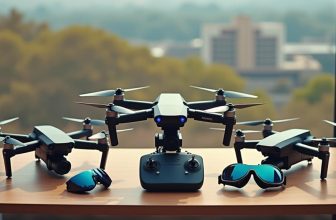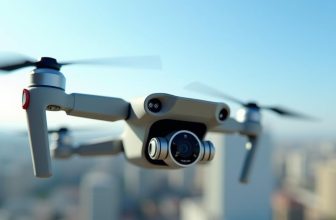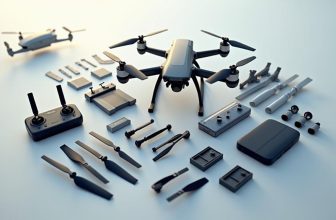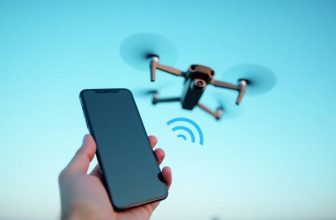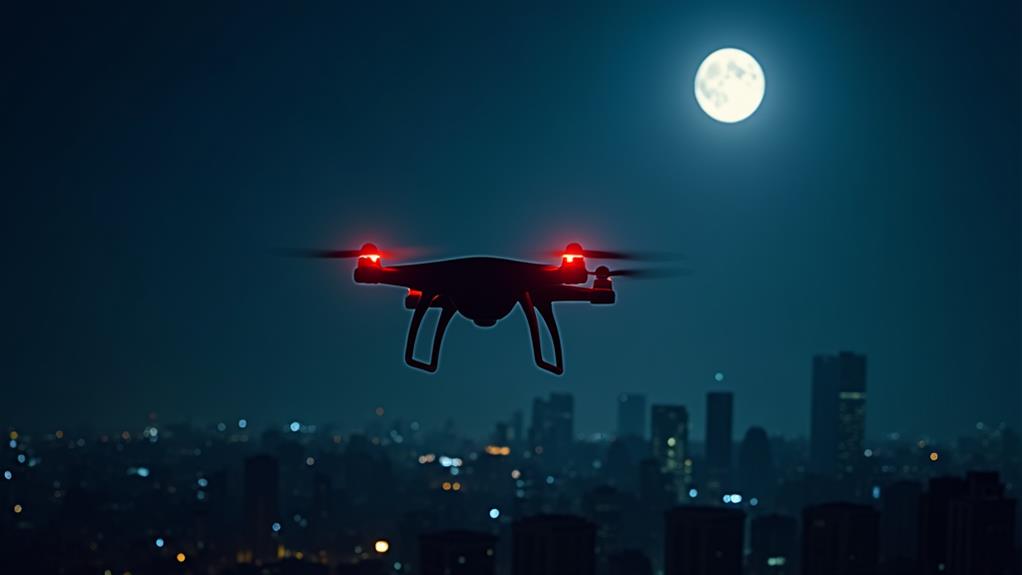
As you consider flying your drone at night, remember that the rules and preparations are more complex than daytime flying. You’re probably aware of the FAA’s regulations, but are you familiar with the additional requirements and considerations for nighttime flights? Ensuring your safety and the safety of others requires a solid understanding of the regulations and best practices. But what specific steps can you take to prepare for a nighttime flight? What features should you look for in a drone designed for nighttime operations, and how do you maintain visual line of sight in the dark?
Contents
Key Takeaways
- Familiarize yourself with FAA regulations and guidelines for nighttime drone operations.
- Conduct thorough pre-flight checks, including battery maintenance and drone inspections.
- Ensure proper lighting and visibility, using position lights or strobes for 360-degree visibility.
- Maintain a visual line of sight and use nighttime navigation techniques, such as GPS and terrain mapping.
- Develop emergency procedures, including mayday calls and emergency locator transmitters.
Understanding FAA Regulations
When operating a drone in the United States, you must comply with Federal Aviation Administration (FAA) regulations to guarantee safe and responsible flight. The FAA regulates drone operations to mitigate risks to people, aircraft, and national security.
You’re required to register your drone and obtain the necessary certifications, such as the Part 107 remote pilot certification, to operate commercially.
Additionally, you must adhere to specific rules, such as maintaining a visual line of sight, flying below 400 feet, and avoiding restricted airspace. However, you can apply for FAA exemptions to deviate from certain regulations.
For instance, you may need an exemption to fly at night, as standard regulations prohibit nighttime operations. To obtain a nighttime permit, you must demonstrate that your drone is equipped with anti-collision lights and that you have a plan in place to mitigate risks.
It’s essential to familiarize yourself with FAA regulations and guidelines to guarantee compliance and safe operations. You can visit the FAA website to access the latest information on regulations, exemptions, and nighttime permits.
Pre-Flight Nighttime Preparations
Before flying your drone at night, guarantee you complete a thorough night drone inspection checklist to verify that all required lights and safety features are functioning correctly.
It’s also vital to perform pre-flight battery maintenance, checking for any signs of wear or damage that could impact your drone’s performance.
Additionally, brief your visual observer on their responsibilities and the specific safety protocols to follow during nighttime operations.
Night Drone Inspection Checklist
Conducting night drone inspections safely requires meticulous preparation to guarantee you’re ready for the unique challenges of flying in low-light conditions.
Before taking to the skies, go through this checklist to make certain you’re adequately prepared.
Review your drone insurance policy to confirm it covers nighttime operations.
Understand your coverage, including any specific requirements or exclusions related to flying at night.
Verify that your policy is up-to-date and provides sufficient coverage for your equipment and potential liabilities.
Inspect your drone and its nighttime accessories, such as LED lights or strobes, to make certain they’re functioning correctly.
Check for any damage or wear on the drone’s airframe, propellers, and other components.
Verify that all required documentation, including certifications and permits, is readily available.
Additionally, check the weather forecast to confirm favorable flying conditions.
Confirm that your drone’s navigation system and other critical systems are functioning correctly.
Once you’ve completed this checklist, you’ll be better prepared to conduct safe and successful night drone inspections.
Pre-Flight Battery Maintenance
Properly maintaining your drone’s battery is crucial for safe and successful nighttime operations. A well-maintained battery guarantees your drone can complete its mission without running out of power, reducing the risk of accidents or loss of equipment.
Before each night flight, you should perform routine battery maintenance tasks to guarantee peak performance. This includes:
- Checking the battery’s state of charge and charging it if necessary
- Verifying the battery’s charging cycles to determine if it needs calibration or replacement
- Inspecting the battery’s physical condition for signs of damage or wear
- Guaranteeing the battery is properly secured in the drone
- Updating the drone’s firmware to guarantee compatibility with the battery
Battery calibration is also an essential step in maintaining your drone’s battery health. Calibration helps the drone’s battery management system to accurately estimate the battery’s state of charge, preventing over-discharging or over-charging.
By following these maintenance tasks, you can extend the life of your drone’s battery and guarantee safe and successful nighttime operations.
Regular maintenance also helps to prevent battery-related issues that could lead to accidents or equipment loss.
Visual Observer Briefing
Performing a thorough visual observer briefing is crucial for safe and successful nighttime drone operations. As a drone operator, you’ll be relying on your visual observer to provide critical information about the drone’s surroundings.
Before the flight, you must clearly define the observer’s role and confirm they understand their responsibilities.
The observer’s primary responsibility is to maintain visual line-of-sight with the drone and report any hazards or obstacles in the area. They should also be aware of their surroundings, including other aircraft, people, and obstacles on the ground.
A key requirement is to brief your observer on the briefing format, which should include the flight plan, weather conditions, and any specific safety concerns.
During the briefing, review the observer’s role, the communication plan, and the emergency procedures. Confirm they understand how to report hazards and what to do in case of an emergency.
Use a standardized briefing format to guarantee all necessary information is covered. This will help guarantee a safe and successful nighttime drone operation.
Choosing the Right Drone
When choosing the right drone for safe flight, you’ll need to weigh several key factors.
Your decision will depend on the drone’s type and features, your pilot skill and experience level, and the airframe’s size and weight.
Drone Type and Features
Choosing the right drone is essential for safe and enjoyable flying. When selecting a drone for night flying, consider its type and features carefully.
A drone designed for aerial photography or videography, for example, may not be the best choice for flying at night due to its weight and size. On the other hand, a drone designed for racing or aerobatics may be more suitable due to its agility and maneuverability.
Some drones offer customization options, such as interchangeable propellers or customizable lighting, which can be beneficial for night flying. Propeller design, in particular, can greatly impact a drone’s performance and stability in low-light conditions.
When choosing a drone, consider the following features:
- Weight and size: A lighter and more compact drone is easier to maneuver and less likely to cause damage in case of a crash.
- Propeller design: A drone with a well-designed propeller can provide more stability and control in low-light conditions.
- Camera and sensor capabilities: A drone with a high-quality camera and sensors can provide better visibility and obstacle detection at night.
- Customization options: A drone that allows customization can be tailored to your specific needs and preferences.
- Lighting: A drone with built-in lighting can improve visibility and safety during night flying.
Pilot Skill and Experience
Evaluating your skill level and experience is crucial in selecting a drone that’s right for you. As a drone pilot, you’ll want to assess your abilities and choose a drone that matches your level of expertise.
If you’re a beginner, it’s imperative to look for a drone with features that make it easy to fly and maneuver, such as obstacle avoidance and GPS. If you’re more experienced, you may want to ponder a drone with advanced features like nighttime simulation, which can help you prepare for flying in low-light conditions.
When choosing a drone for aerial photography, weigh your experience with aerial photography techniques. If you’re new to aerial photography, look for a drone with a high-quality camera and features like image stabilization.
If you’re more experienced, you may want to ponder a drone with advanced camera features like RAW image capture and adjustable aperture. Ultimately, selecting a drone that matches your skill level and experience will help you fly safely and effectively, especially at night.
Airframe Size and Weight
A drone’s airframe size and weight substantially impact its performance, maneuverability, and overall flying experience.
As you consider the right drone for night flying, this is crucial to evaluate the airframe’s size and weight.
Smaller drones are generally more agile and easier to maneuver, while larger drones are often more stable and can carry heavier payloads.
When choosing a drone, consider the following factors related to airframe size and weight:
- Frame material: Look for drones with airframes made from lightweight yet strong materials, such as Carbon Fiber, to minimize weight and maximize performance.
- Weight distribution: Verify the drone’s weight is evenly distributed to maintain stability and balance during flight.
- Aerodynamic design: A well-designed airframe with smooth curves and minimal drag can notably improve flight efficiency and reduce energy consumption.
- Payload capacity: Consider the weight of the payload you plan to carry, such as cameras or sensors, and choose a drone that can handle it.
- Size and portability: Evaluate the drone’s size and weight in relation to your storage and transportation needs.
Visual Line of Sight
Flying Drones Safely at Night
Visual Line of Sight
Your drone’s visual line of sight (VLOS) is crucial for safe operation. As the drone operator, you must maintain a direct and unobstructed view of your drone at all times. This guarantees you can respond quickly to changing environmental conditions, such as other air traffic or obstacles.
At night, maintaining VLOS is more challenging due to reduced visibility. To enhance your drone’s visibility, consider using drone lighting.
Position lights or strobes on your drone to increase its visibility from a distance. Guarantee these lights are visible from the sides and rear, in addition to the front, to provide a 360-degree visibility.
When operating at night, also consider the radio transmission range and reliability. Weak or lost signals can compromise your ability to maintain control of the drone, making it difficult to maintain VLOS.
Choose a drone with a reliable radio transmission system and guarantee it’s configured correctly to minimize the risk of lost signals. By taking these precautions, you can maintain a safe VLOS and reduce the risk of accidents or losing your drone.
Nighttime Navigation Techniques
Most nighttime drone operations require you to rely on instruments and navigation aids, as visual cues are limited.
This shift in navigation approach necessitates a thorough understanding of various techniques to guarantee safe and efficient flight.
When piloting at night, you’ll need to utilize a combination of methods.
Some of these methods include:
- Celestial navigation: Using the position of stars and constellations to estimate your drone’s location and orientation.
- Terrain mapping: Creating a 3D map of the environment to identify obstacles and navigate through the airspace.
- GPS and GNSS: Relying on satellite signals to determine your drone’s location and velocity.
- Inertial measurement units (IMUs): Using onboard sensors to track your drone’s acceleration, orientation, and position.
- Mapping and mission planning: Pre-planning your flight path and using onboard mapping capabilities to navigate and adapt to changing conditions.
Lighting and Visibility Concerns
You’ve mastered nighttime navigation techniques, now it’s time to address the related issues of lighting and visibility.
Proper lighting is essential for safe nighttime drone operation. To increase visibility, many drones are equipped with glowing propellers or LED lights.
Glowing propellers can be particularly effective, as they provide a clear indication of the drone’s orientation and movement.
Additionally, some drones feature safety beacons, which are high-visibility lights that can be activated during nighttime flights.
It’s essential to guarantee that your drone’s lighting system is functioning correctly before each flight.
Check that all lights are operational and not obstructed by any debris or accessories.
You should also be aware of your surroundings and adjust your lighting accordingly.
For example, if you’re flying in an area with high ambient light, you may not need to use your drone’s lights.
Conversely, if you’re flying in a dark area, you’ll want to make sure your lights are visible to others.
Remember to always follow local regulations and guidelines regarding drone lighting and visibility.
Weather Conditions and Night
When maneuvering in low-light conditions, weather conditions can substantially impact the safety and success of your nighttime drone operations.
You’ll need to weigh various factors that can affect your drone’s performance and navigation.
Some key weather conditions to keep in mind include:
- Cloud Cover: Clouds can obstruct your drone’s GPS signal and affect its ability to use Celestial Navigation, which relies on astronomical influences like the position of the stars and constellations.
- Wind Speed and Direction: Wind can greatly impact your drone’s stability and navigation, especially at night when visual references are limited.
- Precipitation: Rain or snow can reduce visibility and make it difficult to navigate, while also affecting your drone’s sensors and electronics.
- Temperature and Humidity: Extreme temperatures and humidity levels can affect your drone’s electronics and battery life.
- Air Pressure: Changes in air pressure can impact your drone’s altitude and navigation systems.
Emergency Procedures at Night
Flying a drone in low-light conditions demands a heightened sense of awareness and preparedness for emergency situations. As a drone operator, you must be familiar with nighttime signal procedures to effectively communicate with air traffic control and other aircraft.
In the event of an emergency, you’ll need to quickly and clearly convey your drone’s location and status.
Understand and follow established emergency beacon protocols, such as activating your drone’s emergency locator transmitter (ELT) or broadcasting a Mayday call on the designated emergency frequency. Guarantee your drone is equipped with a functioning ELT and that you know how to activate it.
In addition to beacon protocols, be prepared to use visual signals to alert others to your drone’s presence. Use high-intensity strobe lights or flares to signal your drone’s location and intentions. Familiarize yourself with local regulations and guidelines for nighttime signal procedures to certify compliance.
Frequently Asked Questions
Can I Fly Drones Near Airports at Night?
When you consider flying drones near airports, you must follow strict regulations, ensuring you don’t compromise air traffic. At night, this requires extra caution, using proper night navigation and adhering to drone regulations for aviation safety.
Is Drone Insurance Mandatory for Nighttime Flights?
You’ll find that drone insurance isn’t always mandatory, but it’s highly recommended to protect against drone liability. Expect nighttime premiums to be higher due to increased risks and reduced visibility during evening operations.
Can I Use My Drone for Search and Rescue at Night?
Like a phoenix rising in the dark, you’re seeking to utilize your drone for nighttime search and rescue. You can, using thermal imaging, but guarantee you comply with regulations governing nighttime operations and obtain necessary permits.
Are There Specific Drone Lights for Nighttime Flying?
When flying at night, you’ll need specialized lighting. You can choose drone lighting systems or LED light kits designed for nighttime operations, providing increased visibility and safety while in the air.
Can I Fly My Drone in a Designated No-Fly Zone at Night?
You’re tempted to defy rules, but don’t risk it. Entering a designated no-fly zone at night still requires compliance. Check for nocturnal restrictions and obtain nighttime permits before flying, even in the darkness.
Conclusion
You’ve navigated the wild west of night drone flying, and now it’s time to land safely. To recap, adhering to FAA regulations, thorough pre-flight preparations, and understanding nighttime navigation techniques are key to a successful flight. Keep your wits about you, maintain a visual line of sight, and don’t get caught in a storm. With the right drone and skills, you’ll be flying like a pro, even in the dark of night.



